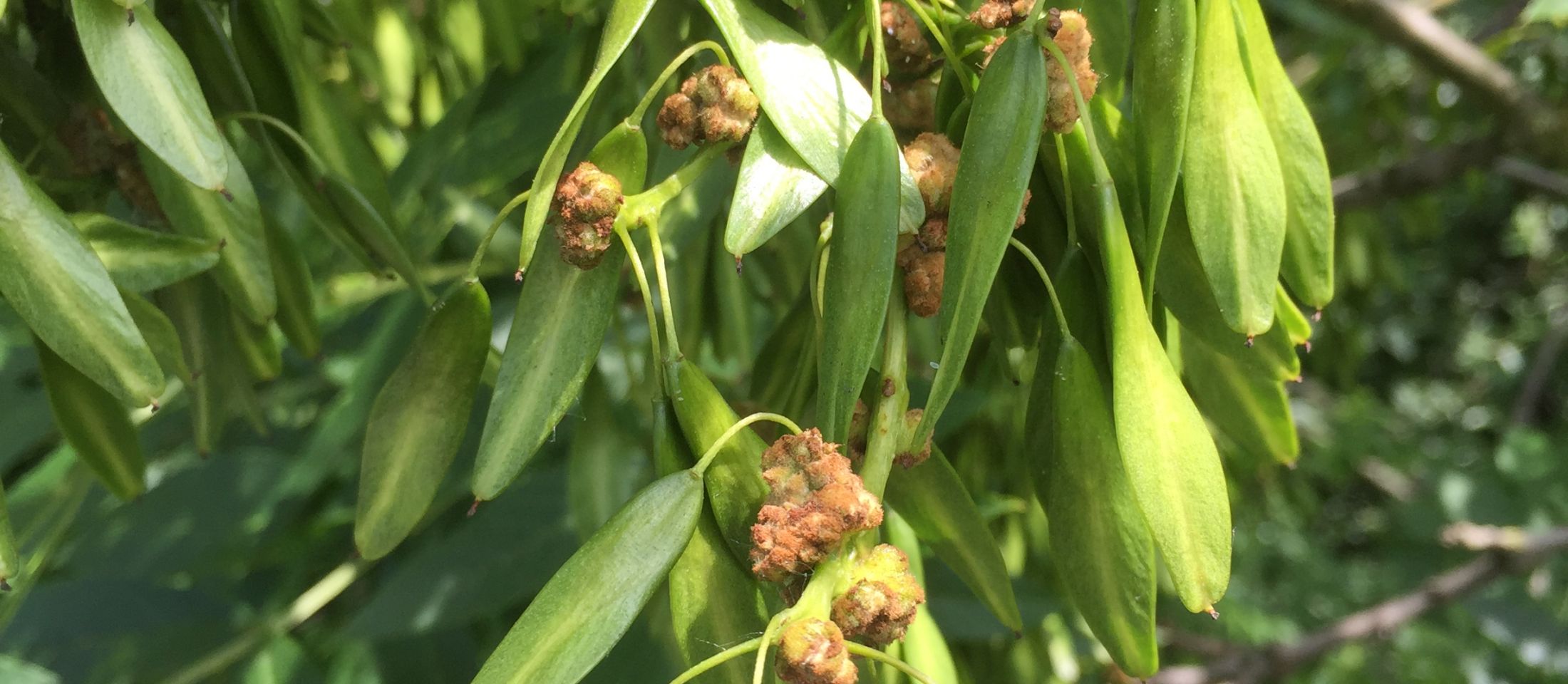
Cauliflower galls. Photo: Tony Harwood

Cauliflower galls. Photo: Tony Harwood
The devastating impact of Ash Dieback upon Kent’s most widespread tree species is all too obvious. However, the ‘collateral damage’ also being visited upon the many organisms dependent upon parts of the European Ash for food, or which make a home on or within the tree itself, or predate or parasitize this community is less well understood. We do now know that some invertebrates which feed upon ash foliage can also subsist on Wild Privet (Ligustrum vulgare) from the same Oleaceae family, which should be actively favoured within land management interventions and far more widely planted within landscaping schemes. However, many species have evolved the high risk strategy of being totally reliant, or ‘obligate’, upon Ash for their survival.
One such species is the fascinating Cauliflower Gall Mite (Aceria fraxinivora). Though only 0.5mm in length when fully grown, the presence of these tiny sap-sucking Arachnids is betrayed by the curiously shaped galls they stimulate to form on Ash keys. The rounded galls are ridged and fissured like miniature brains and gradually darken in hue, from pale green through to dark brown, as summer progresses and the mite’s offspring develop safely inside.
Tightly rolled ash leaflets decorated with a deep claret-red mesh pattern are the creches for the young of another tiny gall forming invertebrate which is obligate upon Ash. The pretty little Jumping Plant Louse (Psyllopsis fraxini) which forms the Ash Leaflet Roll Gall is one of four Psyllid species in the UK thought to be completely dependent upon Ash for their continued existence.
Text and Images supplied by Tony Harwood, Principal Resilience Officer for Kent County Council